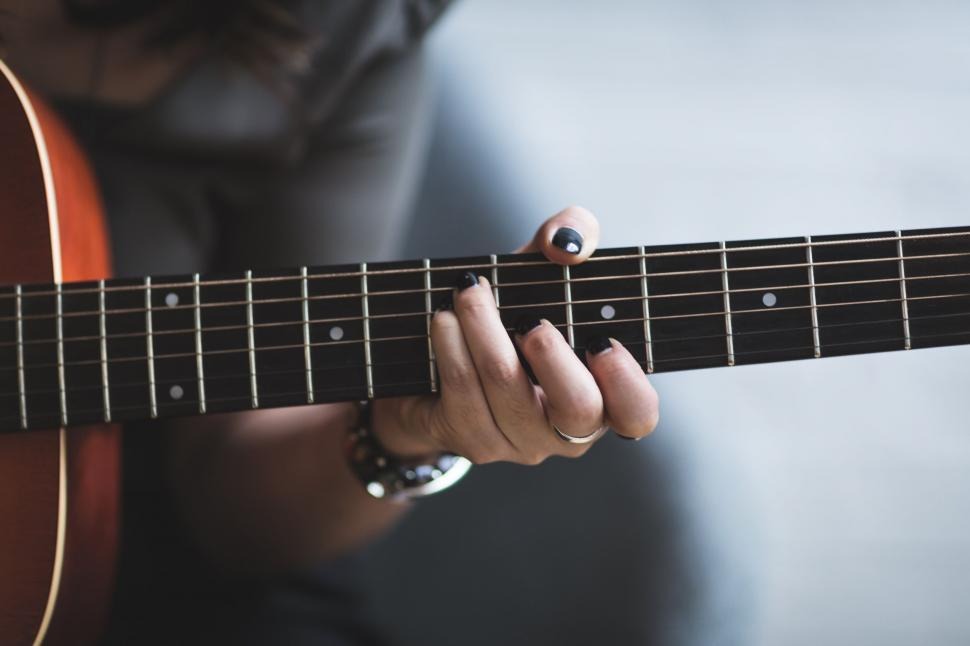
Are your hands secretly sabotaging your guitar playing? Most guitarists struggle with techniques they don’t even know exist. Your left hand holds incredible untapped power that can transform your sound overnight.
Many players blame their guitars or abilities when the real culprit hides in plain sight. Simple hand position adjustments can unlock skills you never knew you had. The difference between amateur and professional often comes down to these hidden techniques.
Your journey to guitar mastery starts with understanding these common left-hand mistakes.
5. Pinching Bar Chords: The Grip That Kills Your Sound

Bar chords can feel like wrestling an angry squid. Your hand cramps, fingers protest, and those clean notes sound more like a cat walking across a keyboard.
Rotate your forearm slightly, moving your thumb towards your body. This creates leverage like a well-placed crowbar. Mastering this technique means strategic forearm rotation becomes second nature. Players quickly learn to use the hard part of their index finger as a precision tool, pressing strings with surgical accuracy. The result? Preventing dead notes and dramatically reducing hand fatigue. Even the most precise guitar Tuners can’t compensate for poor hand technique.
4. Thumb Placement: The Invisible Technique Killer

Your thumb controls more than you think. Adjusting your thumb to the correct position is crucial for balanced hand movement. Learn how a subtle shift can revolutionize your grip and stretch capability; no magic wand, just pure mechanics.
Center your thumb between middle and ring fingers. This weight distribution transforms your approach to playing. The pinky, once a timid mouse, now roars like a lion. By carefully balancing hand weight, players discover a new world of chord clarity. Suddenly, those complex chord shapes stop feeling like quantum physics. Your pinky gains strength, reach extends, and overall playing becomes more fluid and confident.
3. Classical vs. Modern Hand Positioning

Guitar techniques mutate faster than movie franchises. The rigid classical position worked for Bach but crashes and burns in blues and rock. (Apologies to classical guitar purists.)
An angled hand with thumb over the neck unlocks sonic wormholes. Players who adapt classical foundations discover a new realm of musical expression. This technique enables creative bending that transforms standard playing into something electric. By positioning the hand differently, musicians can create vibrato that screams raw emotion, breaking free from traditional constraints and exploring new sonic territories. Mastering hand positioning becomes crucial when experimenting with guitar effects to truly expand your musical palette.
2. Excessive Tension: The Performance Handcuff

Gripping your guitar like it’s your last lifeline? Stop. Tension murders smooth playing. (Your hands are precision instruments, not weightlifting champions.)
Finding the minimal pressure needed for crystal-clear notes becomes an art form. Slow, deliberate practice allows players to monitor each finger’s tension with microscopic precision. Forget brute force—this approach is about surgical control. Gripping the guitar too tightly can hinder smooth playing, but practicing with the right amount of tension and proper exercises can dramatically improve your endurance and control.
The unexpected bonus? Dramatically improved musical endurance that turns grueling practice sessions into seamless, enjoyable experiences.
1. Bent Wrist: The Hidden Performance Limiter

A bent wrist is like driving with emergency brakes engaged. This position chokes movement and rolls out the red carpet for potential injury.
Maintaining a straight wrist requires deliberate practice and awareness. Raising the guitar neck slightly creates the ideal alignment. Your hand transforms into a finely-tuned machine, moving without unnecessary resistance. (Goodbye, future physical therapy bills.) This approach prevents potential injuries while maximizing finger flexibility. Players who master this technique discover a newfound freedom in their playing, with each movement becoming more intentional and precise.





















